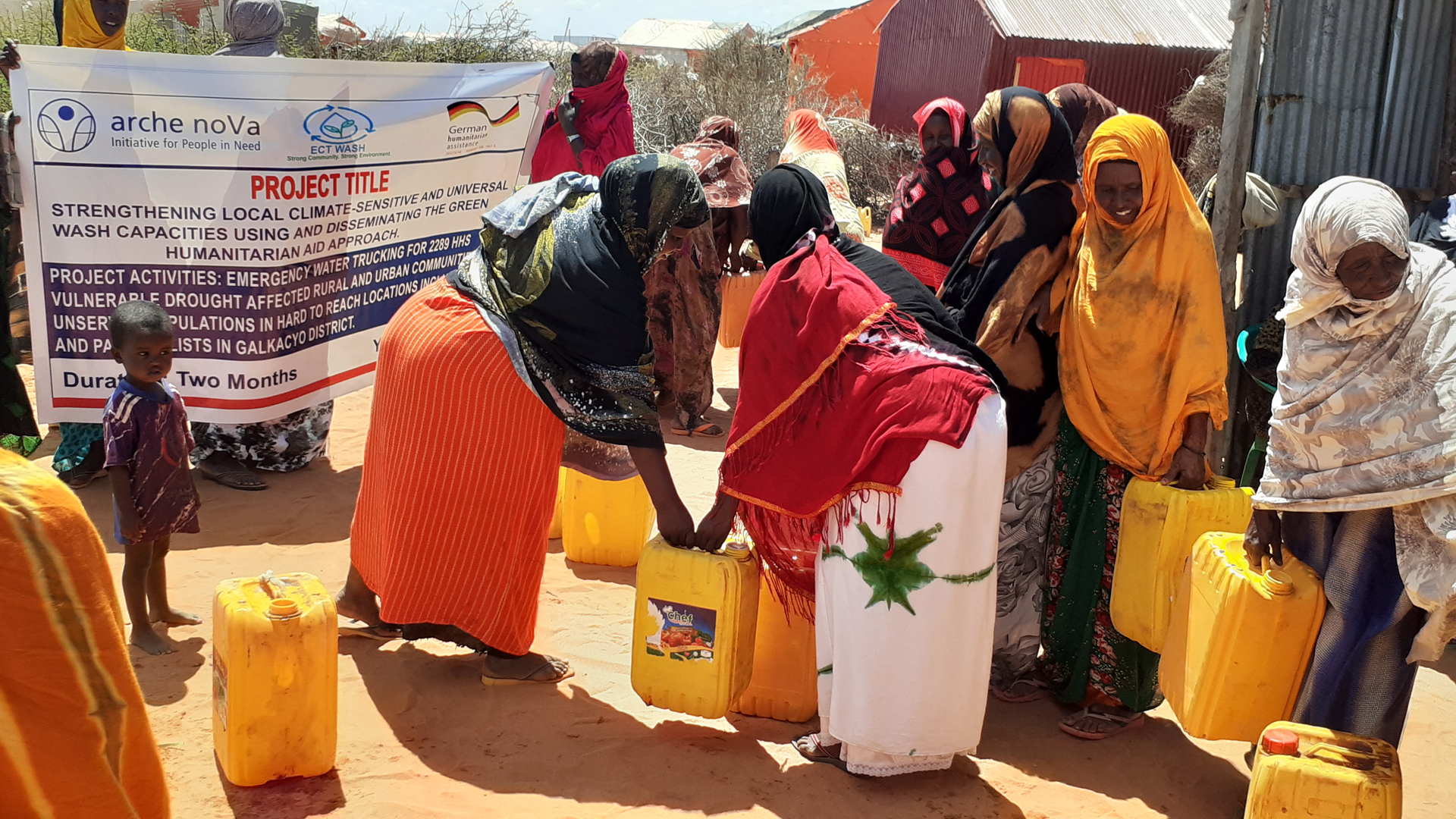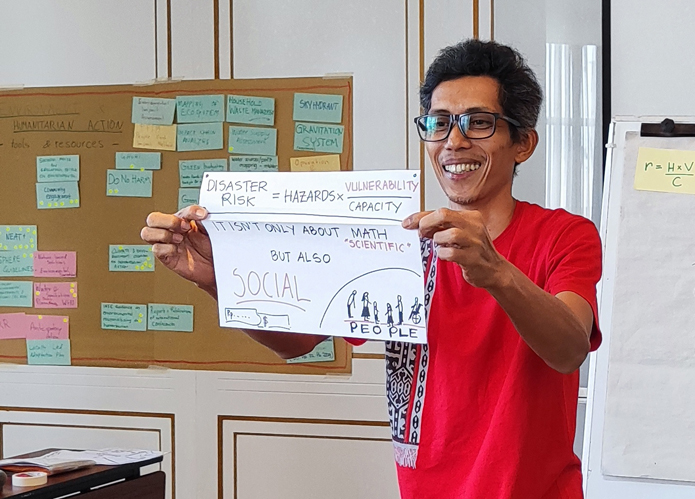Heavy rain, high water, floods, but also droughts and aridity: extreme weather events are becoming increasingly frequent as a result of climate change - especially in the global South. Prolonged droughts followed by severe flooding and insect infestations endanger harvests, livestock and the existence of entire communities. Extensive stretches of land become uninhabitable. The increasing number of disasters threaten the lives of billions of people and make humanitarian aid indispensable.
How can emergency aid be provided without damaging the ecosystem?
How can people in need be supplied with water without using up all local supplies or producing enormous amounts of plastic waste? How can wastewater be organized in emergency aid so that it is not released unfiltered into the environment and, conversely, endangers the often already scarce water reservoirs? "Aid organizations have a responsibility to act in a climate-sensitive manner so as not to further damage the local and global ecosystem," explains Stefanie Knörr, project coordinator of the global project at arche noVa. "At the same time, we must prepare the population for further disasters in the best possible way."
In cooperation with ASB, the German Toilet Organization and local partner organizations, arche noVa is implementing a global pro-gramme in a total of 14 countries. "We set ourselves the goal of providing sustainable, environmentally friendly and inclusive hu-manitarian aid," emphasizes Stefanie Knörr. arche noVa is respon-sible for six of the 14 countries: Mali, Somalia, the Autonomous Republic of Somaliland, Ethiopia, Lebanon and Myanmar.

"Our local partners are more than open to this they are all very committed and try to think in many directions - both in small and large contexts." The project, which has already begun, is being funded by the Federal Foreign Office with twelve million euros. It will run for three years, until October 2026.
But what does this humanitarian aid mean in concrete terms?
arche noVa project coordinator Stefanie Knörr says: "The most important elements of the programme are a long-term green and safe water and sanitation supply in areas that often have to deal with disasters and extreme weather events". This also includes recycling the waste produced and sustainable wastewater management. "In the past, hardly any thought was given to the path of wastewater in emergency aid, but that is no longer justifiable today." In the various project areas, the aim is to find environmentally friendly and resource-conserving solutions, such as the infiltration-proof lining of pit toilets. But improvements can also be made in the distribution of relief supplies, for example by packing goods in reusable or environmentally friendly materials. Last but not least, arche noVa is increasingly relying on solar-powered pumps for water supply at many locations.
Climate-friendly technologies should provide support
In line with the program's approach, green humanitarian aid should also use climate and environmentally friendly technologies such as photovoltaics and wastewater filtration systems, which are always embedded in the local context and local knowledge. "At the same time, we make sure that vulnerable groups such as women, older people, internally displaced persons and people with disabilities in particular benefit from the activities," explains the project coordinator.
Disaster prevention knowledge strengthens local communities
To make local communities resilient enough to protect themselves, arche noVa is also focusing on training and action plans in the event of a disaster as part of the global green aid project. "At the same time, we are eager to work with the local communities to install early warning systems and create alternative sources of income - in case a drought or flood has destroyed the entire harvest," explains Knörr. arche noVa organizes and supports the transfer of knowledge and the formation of the necessary structures at the local and regional level. Networking is also promoted to share experiences and provide support.
Climate and environmental charter serves as a basis
The transformation to green humanitarian aid should take place based on the Climate and Environment Charter of Humanitarian Organizations, to which arche noVa has also committed itself. The charter covers aspects of climate protection and inclusion, but also calls for more localization and empowerment of local actors. "We want to familiarize our partners and other humanitarian actors in the project countries with the charter and enable them to implement it in the planning and implementation of aid measures," explains Knörr. Only together can humanitarian aid truly become green. "The aim is that at the end of the project, we and our partners from civil society disaster management institutions on the ground will have sufficient specialist knowledge and climate-sensitive, inclusive practical examples - both regionally and at a global level," explains the project manager.
For more information on the Global Program, click here.














